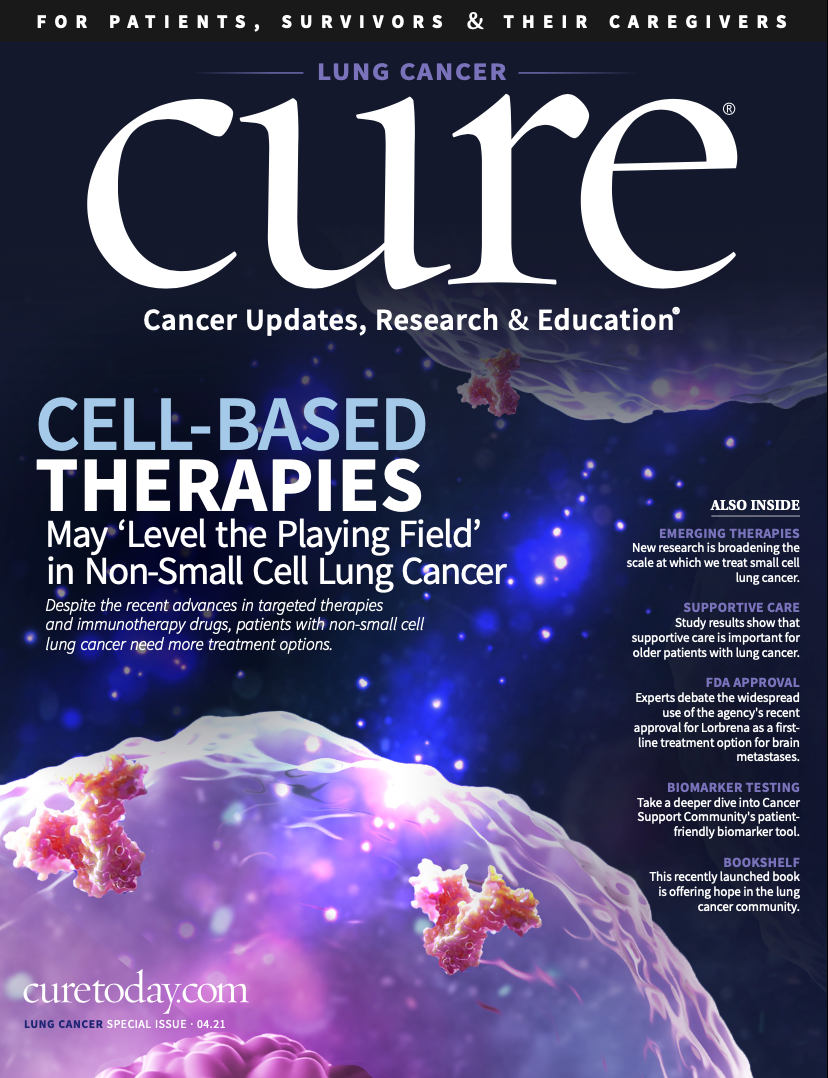Publication
Article
CURE
The Different Roads of Lung Cancer
Author(s):
We all handle things differently, look at things differently and understand differently, meaning that the journey of each patient with cancer is unique. But there are always similarities among the symptoms, risks and treatments.
“Lung cancer” may be only two words, but when you receive a diagnosis, they loom large. And each patient will handle their diagnosis differently.
Mari Casanova, for instance, had no experience with cancer and thought her journey would be easy. Her first doctor told her how aggressive her small cell lung cancer (SCLC) was but never mentioned the possibility of death. She didn’t fully grasp the severity of her disease until she found a second oncologist who explained that she could die.
John Williams received a diagnosis of SCLC around the same time as Casanova, but he immediately grasped what this meant and had the help of a palliative care team. As we learned in one of our recent CURE® Educated Patient® Summits, palliative care is extremely important for any patient with cancer — and not just as a last resort. A supportive palliative care team can help patients like Williams fully understand their diagnoses and give them better quality of life during and after treatment. Unlike Casanova, Williams received his diagnosis just as emerging therapies were approved by the Food and Drug Administration — specifically, Tecentriq (atezolizumab) as a part of the first immunotherapy-plus-chemotherapy regimen for SCLC. Read more about Casanova and Williams in this special issue of CURE®.
For another feature in these pages, we speak with an 82-year-old man who benefited from palliative care at Penn Medicine’s Abramson Cancer Center during his complex treatment for non-small cell lung cancer (NSCLC). The team, who stayed at his side during more than 30 proton radiation treatments, ensured that everything went smoothly with as little impact as possible on his quality of life.
These are only three experiences out of the many cases of lung cancer, but they illustrate how each patient is different. We all handle things differently, look at things differently and understand differently, meaning that the journey of each patient with cancer is unique. But there are always similarities among the symptoms, risks and treatments.
One big risk associated with lung cancer is brain metastases, or the traveling of cancer cells from their original site to the brain. You’ll read more about this as we speak with doctors regarding the most recent research and trials. Also in this issue, stay up to date on news and insights from the 2020 World Conference on Lung Cancer, including a new novel therapy for NSCLC.
For more news on cancer updates, research and education, don’t forget to subscribe to CURE®’s newsletters here.





